Apr
16
2024
 Evolution deniers (I know there is a spectrum, but generally speaking) are terrible scientists and logicians. The obvious reason is because they are committing the primary mortal sin of pseudoscience – working backwards from a desired conclusion rather than following evidence and logic wherever it leads. They therefore clasp onto arguments that are fatally flawed because they feel they can use them to support their position. One could literally write a book using bad creationist arguments to demonstrate every type of poor reasoning and pseudoscience (I should know).
Evolution deniers (I know there is a spectrum, but generally speaking) are terrible scientists and logicians. The obvious reason is because they are committing the primary mortal sin of pseudoscience – working backwards from a desired conclusion rather than following evidence and logic wherever it leads. They therefore clasp onto arguments that are fatally flawed because they feel they can use them to support their position. One could literally write a book using bad creationist arguments to demonstrate every type of poor reasoning and pseudoscience (I should know).
A classic example is an argument mainly promoted as part of so-called “intelligent design”, which is just evolution denial desperately seeking academic respectability (and failing). The argument goes that natural selection cannot increase information, only reduce it. It does not explain the origin of complex information. For example:
A big obstacle for evolutionary belief is this: What mechanism could possibly have added all the extra information required to transform a one-celled creature progressively into pelicans, palm trees, and people? Natural selection alone can’t do it—selection involves getting rid of information. A group of creatures might become more adapted to the cold, for example, by the elimination of those which don’t carry the genetic information to make thick fur. But that doesn’t explain the origin of the information to make thick fur.
I am an educator, so I can forgive asking a naive question. Asking it in a public forum in order to defend a specific position is more dodgy, but if it were done in good faith, that could still propel public understanding forward. But evolution deniers continue to ask the same questions over and over, even after they have been definitively answered by countless experts. That demonstrates bad faith. They know the answer. They cannot respond to the answer. So they pretend it doesn’t exist, or when confronted directly, respond with the equivalent of, “Hey, look over there.”
Continue Reading »
Apr
15
2024
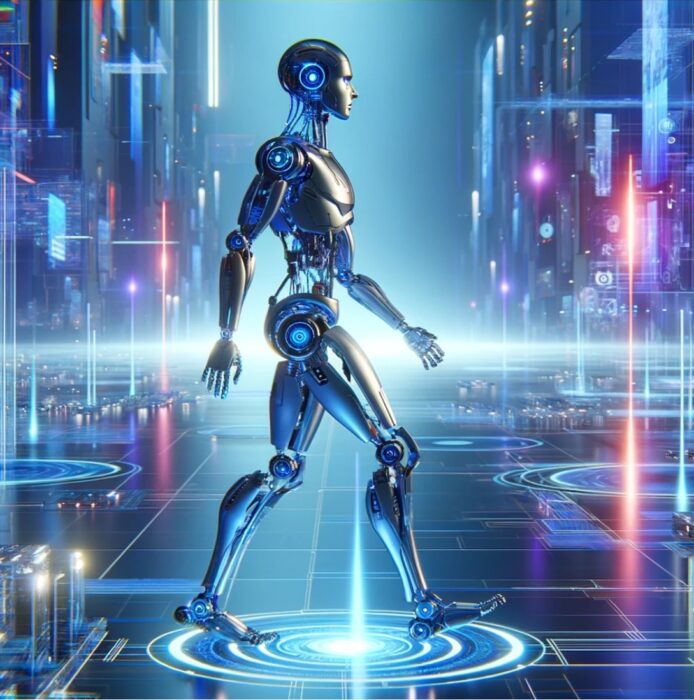 Generative AI applications seem to be on the steep part of the development curve – not only is the technology getting better, but people are finding more and more uses for it. It’s a new powerful tool with broad applicability, and so there are countless startups and researchers exploring its potential. The last time, I think, a new technology had this type of explosion was the smartphone and the rapid introduction of millions of apps.
Generative AI applications seem to be on the steep part of the development curve – not only is the technology getting better, but people are finding more and more uses for it. It’s a new powerful tool with broad applicability, and so there are countless startups and researchers exploring its potential. The last time, I think, a new technology had this type of explosion was the smartphone and the rapid introduction of millions of apps.
Generative AI applications have been created to generate text, pictures, video, songs, and imitate specific voices. I have been using most of these apps extensively, and they are continually improving. Now we can add another application to the list – generating virtual environments. This is not a public use app, but was developed by engineers for a specific purpose – to train robots.
The application is called holodeck, after the Star Trek holodeck. You can use natural language to direct the application to build a specific type of virtual 3D space, such as “build me a three bedroom single floor apartment” or “build me a music studio”. The application uses generative AI technology to then build the space, with walls, floor, and ceiling, and then pull from a database of objects to fill the space with appropriate things. It also has a set of rules for where things go, so it doesn’t put a couch on the ceiling.
The purpose of the app is to be able to generate lots of realistic and complex environments in which to train robot navigation AI. Such robotic AIs need to be trained on virtual spaces so they can learn how to navigate out there is the real world. Like any AI training, the more data the better. This means the trainers need millions of virtual environments, and they just don’t exist. In an initial test, Holodeck was compared to an earlier application called ProcTHOR and performed significantly better. For example, when asked to find a piano in a music studio a ProcTHOR trained robot succeeded 6% of the time while a Holodeck trained robot succeeded 30% of the time.
Continue Reading »
Apr
11
2024
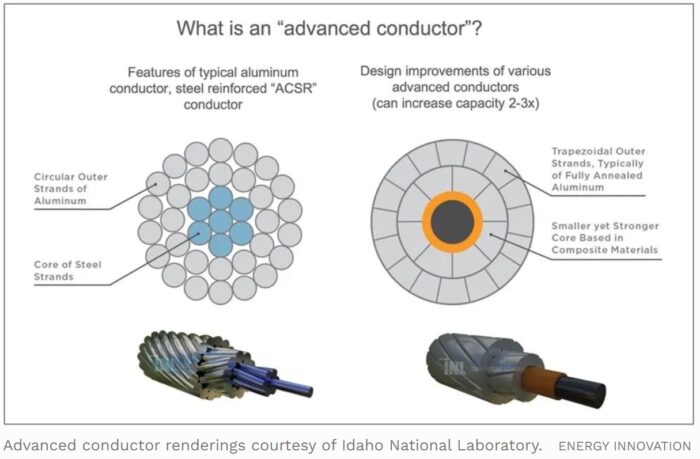 Over the weekend when I was in Dallas for the eclipse, I ran into a local businessman who works in the energy sector, mainly involved in new solar projects. This is not surprising as Texas is second only to California in solar installation. I asked him if he is experiencing a backlog in connections to the grid and his reaction was immediate – a huge backlog. This aligns with official reports – there is a huge backlog and its growing.
Over the weekend when I was in Dallas for the eclipse, I ran into a local businessman who works in the energy sector, mainly involved in new solar projects. This is not surprising as Texas is second only to California in solar installation. I asked him if he is experiencing a backlog in connections to the grid and his reaction was immediate – a huge backlog. This aligns with official reports – there is a huge backlog and its growing.
In fact, the various electrical grids may be the primary limiting factor in transitioning to greener energy sources. As I wrote recently, energy demand is increasing, faster than previously projected. Our grid infrastructure is aging, and mainly uses 100 year old technology. There are also a number of regulatory hurdles to expanding and upgrading the grid. There is good news in this story, however. We have at our disposal the technology to virtually double the capacity of our existing grid, while reducing the risk of sparking fires and weather-induced power outages. This can be done cheaper and faster than building new power lines.
The process is called reconductoring, which just means replacing existing power lines with more advanced power lines. I have to say, I falsely assumed that all this talk about upgrading the electrical grid included replacing existing power lines and other infrastructure with more advanced technology, but it really doesn’t. It is mainly about building new grid extensions to accommodate new energy sources and demand. Every resource I have read, including this Forbes article, give the same primary reason why this is the case. Utility companies make more money from expensive expansion projects, for which they can charge their customers. Cheaper reconductoring projects make them less money.
Continue Reading »
Apr
08
2024
 I am currently in Dallas Texas waiting to see, hopefully, the 2024 total solar eclipse. This would be my first total eclipse, and everything I have heard indicates that it is an incredible experience. Unfortunately, the weather calls for some clouds, although forecasts have been getting a little better over the past few days, with the clouds being delayed. Hopefully there will be a break in the clouds during totality.
I am currently in Dallas Texas waiting to see, hopefully, the 2024 total solar eclipse. This would be my first total eclipse, and everything I have heard indicates that it is an incredible experience. Unfortunately, the weather calls for some clouds, although forecasts have been getting a little better over the past few days, with the clouds being delayed. Hopefully there will be a break in the clouds during totality.
Actually there is another reason to hope for a good viewing. During totality the temperature will drop rapidly. This can cause changes in pressure that will temporarily disperse some types of clouds.
I am prepared with eclipse glasses, a pair of solar binoculars, and one of my viewing companions has a solar telescope. These are all certified and safe, and I have already used the glasses and binoculars extensively. You can use them to view the sun even when there is not an eclipse. With the binoculars you can see sunspots – it’s pretty amazing.
Continue Reading »
Apr
02
2024
 On a recent SGU live streaming discussion someone in the chat asked – aren’t frivolous AI applications just toys without any useful output? The question was meant to downplay recent advances in generative AI. I pointed out that the question is a bit circular – aren’t frivolous applications frivolous? But what about the non-frivolous applications?
On a recent SGU live streaming discussion someone in the chat asked – aren’t frivolous AI applications just toys without any useful output? The question was meant to downplay recent advances in generative AI. I pointed out that the question is a bit circular – aren’t frivolous applications frivolous? But what about the non-frivolous applications?
Recent generative AI applications are a powerful tool. They leverage the power and scale of current data centers with the massive training data provided by the internet, using large language model AI tools that are able to find patterns and generate new (although highly derivative) content. Most people are likely familiar with this tech through applications like ChatGPT, which uses this AI process to generate natural-language responses to open ended “prompts”. The result is a really good chat bot, but also a useful interface for searching the web for information.
This same technology can generate output other than text. It can generate images, video, and music. The results are technically impressive (if far from perfect), but in my experience not genuinely creative. I think these are the fun applications the questioner was referring to.
But there are many serious applications of this technology in development as well. An app like ChatGPT can make an excellent expert system, searching through tons of data to produce useful information. This can have many practical applications, from generating lists of potential diagnoses for doctors to consider, to writing first-draft legal contracts. There are still kinks to be worked out, but the potential is clearly amazing.
Continue Reading »
Apr
01
2024
I have not written before about Havana Syndrome, mostly because I have not been able to come to any strong conclusions about it. In 2016 there was a cluster of strange neurological symptoms among people working at the US Embassy in Havana, Cuba. They would suddenly experience headaches, ringing in the ears, vertigo, blurry vision, nausea, and cognitive symptoms. Some reported loud whistles, buzzing or grinding noise, usually at night while they were in bed. Perhaps most significantly, some people who reported these symptoms claim that there was a specific location sensitivity – the symptoms would stop if they left the room they were in and resume if they returned to that room.
These reports lead to what is popularly called “Havana Syndrome”, and the US government calls “anomalous health incidents” (AHIs). Eventually diplomats in other countries also reported similar AHIs. Havana Syndrome, however, remains a mystery. In trying to understand the phenomenon I see two reasonable narratives or hypotheses that can be invoked to make sense of all the data we have. I don’t think we have enough information to definitely reject either narrative, and each has its advocates.
One narrative is that Havana Syndrome is caused by a weapon, thought to be a directed pulsed electromagnetic or acoustic device, used by our adversaries to disrupt American and Canadian diplomats and military personnel. The other is that Havana Syndrome is nothing more than preexisting conditions or subjective symptoms caused by stress or perhaps environmental factors. All it would take is a cluster of diplomats with new onset migraines, for example, to create the belief in Havana Syndrome, which then takes on a life of its own.
Both hypotheses are at least plausible. Neither can be rejected based on basic science as impossible, and I would be cautious about rejecting either based on our preexisting biases or which narrative feels more satisfying. For a skeptic, the notion that this is all some kind of mass delusion is a very compelling explanation, and it may be true. If this turns out to be the case it would definitely be satisfying, and we can add Havana Syndrome to the list of historical mass delusions and those of us who lecture on skeptical topics can all add a slide to our Powerpoint presentations detailing this incident.
Continue Reading »
Mar
29
2024
 I don’t think I know anyone personally who doesn’t have strong opinions about music – which genres they like, and how the quality of music may have changed over time. My own sense is that music as a cultural phenomenon is incredibly complex, no one (in my social group) really understands it, and our opinions are overwhelmed by subjectivity. But I am fascinated by it, and often intrigued by scientific studies that try to quantify our collective cultural experience. And I know there are true experts in this topic, musicologists and even ethnomusicologists, but haven’t found good resources for science communication in this area (please leave any recommendations in the comments).
I don’t think I know anyone personally who doesn’t have strong opinions about music – which genres they like, and how the quality of music may have changed over time. My own sense is that music as a cultural phenomenon is incredibly complex, no one (in my social group) really understands it, and our opinions are overwhelmed by subjectivity. But I am fascinated by it, and often intrigued by scientific studies that try to quantify our collective cultural experience. And I know there are true experts in this topic, musicologists and even ethnomusicologists, but haven’t found good resources for science communication in this area (please leave any recommendations in the comments).
In any case, here are some random bits of music culture science that I find interesting. A recent study analyzing 12,000 English language songs over the last 40 years has found that songs have been getting simpler and more repetitive over time. They are using fewer words with greater repetition. Further, the structure of the lyrics are getting simpler, and they are more readable and easier to understand. Also, the use of emotional words has increased, and has become overall more negative and more personal. I have to note this is a single study and there are some concerns about the software used in the analysis, but while this is being investigated the authors state that it is unlikely any glitch will alter their basic findings.
But taken at face value, it’s interesting that these findings generally fit with my subjective experience. This doesn’t necessarily make me more confident in the findings, and I do worry that I am just viewing these results through my confirmation bias filter. Still, it not only fits what I have perceived in music but in culture in general, especially with social media. We should be wary of simplistic explanations, but I wonder if this is mainly due to a general competition for attention. Overtime there is a selective pressure for media that is more immediate, more emotional, and easier to consume. The authors also speculate that it may reflect our changing habits in terms of consuming media. There is a greater tendency to listen to music, for example, in the background, while doing other things (perhaps several other things).
Continue Reading »
Mar
26
2024
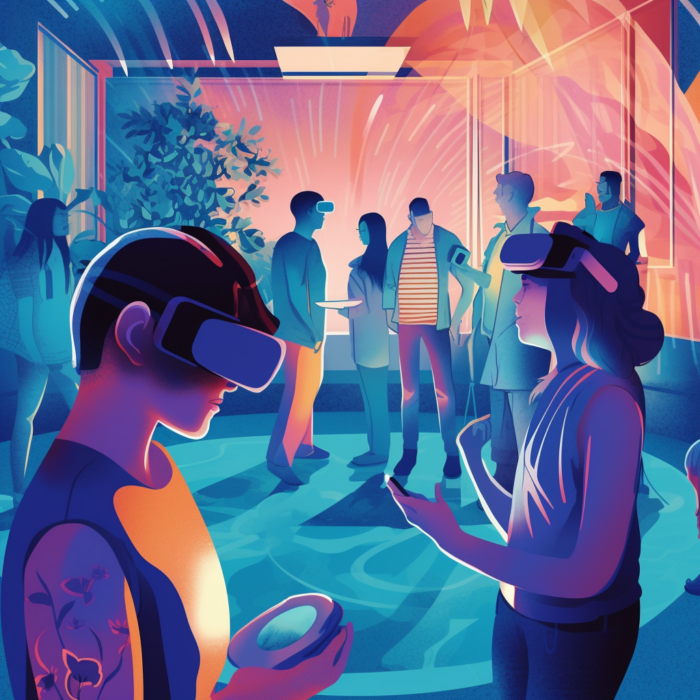 In 1974 Robert Nozick published the book, Anarchy, State, and Utopia, in which he posed the following thought experiment: If you could be plugged into an “experience machine” (what we would likely call today a virtual reality or “Matrix”) that could perfectly replicate real-life experiences, but was 100% fake, would you do it? The question was whether you would do this irreversibly for the rest of your life. What if, in this virtual reality, you could live an amazing life – perfect health and fitness, wealth and resources, and unlimited opportunity for adventure and fun?
In 1974 Robert Nozick published the book, Anarchy, State, and Utopia, in which he posed the following thought experiment: If you could be plugged into an “experience machine” (what we would likely call today a virtual reality or “Matrix”) that could perfectly replicate real-life experiences, but was 100% fake, would you do it? The question was whether you would do this irreversibly for the rest of your life. What if, in this virtual reality, you could live an amazing life – perfect health and fitness, wealth and resources, and unlimited opportunity for adventure and fun?
Nozick hypothesized that people generally would not elect to do this (as summarized in a recent BBC article). He gave three reasons – we want to actual do certain things, and not just have the experience of doing them, we want to be a certain kind of person and that can only happen in reality, and we want meaning and purpose in our lives, which is only possible in reality.
A lot has happened in the last 50 years and it is interesting to revisit Nozick’s thought experiment. I would say I basically disagree with Nozick, but there is a lot of nuance that needs to be explored. For me there are two critical variables, only one of which I believe was explicitly addressed by Nozick. In his thought experience once you go into the experience machine you have no memory of doing so, therefore you would believe the virtual reality to be real. I would not want to do this. So in that sense I agree with him – but he did not give this as a major reason people would reject the choice. I would be much more likely to go into a virtual reality if I retained knowledge of the real world and that I was in a virtual world.
Continue Reading »
Mar
25
2024
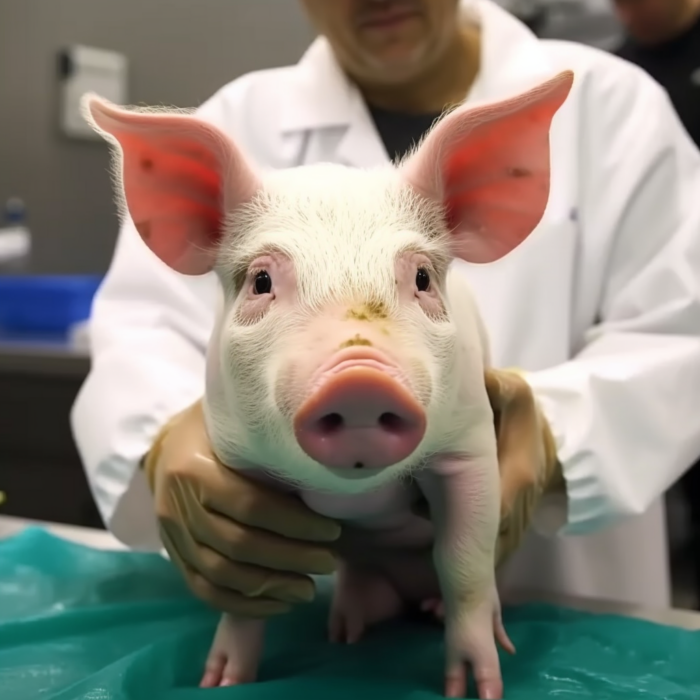 On March 16 surgeons transplanted a kidney taken from a pig into a human recipient, Rick Slayman. So far the transplant is a success, but of course the real test will be how well the kidney functions and for how long. This is the first time such a transplant has been done into a living donor – previous experimental pig transplants were done on brain dead patients.
On March 16 surgeons transplanted a kidney taken from a pig into a human recipient, Rick Slayman. So far the transplant is a success, but of course the real test will be how well the kidney functions and for how long. This is the first time such a transplant has been done into a living donor – previous experimental pig transplants were done on brain dead patients.
This approach to essentially “growing organs” for transplant into humans, in my opinion, has the most potential. There are currently over 100 thousand people on the US transplant waiting list, and many of them will die while waiting. There are not enough organs to go around. If we could somehow manufacture organs, especially ones that have a low risk of immune rejection, that would be a huge medical breakthrough. Currently there are several options.
One is to essentially construct a new organ. Attempts are already underway to 3D print organs from stem cells, which can be taken from the intended recipient. This requires a “scaffold” which is connective tissue taken from an organ where the cells have been stripped off. So you still need, for example, a donor heart. You then strip that heart of cells, 3D print new heart cells onto what’s left to create a new heart. This is tricky technology, and I am not confident it will even work.
Another option is to grow the organs ex-vivo – grow them in a tank of some kind from stem cells taken from the intended recipient. The advantage here is that the organ can potentially be a perfect new organ, entirely human, and with the genetics of the recipient, so no issues with rejection. The main limitation is that it takes time. Considering, however, that people often spend years on the transplant wait list, this could still be an option for some. The problem here is that we don’t currently have the technology to do this.
Continue Reading »
Mar
21
2024
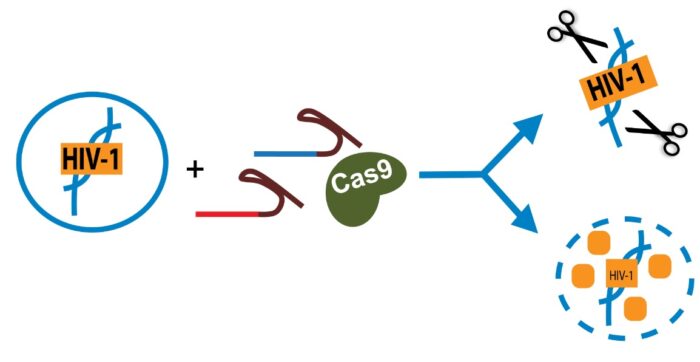 CRISPR has been big scientific news since it was introduced in 2012. The science actually goes back to 1987, but the CRISPR/Cas9 system was patented in 2012, and the developers won the Noble Prize in Chemistry in 2020. The system gives researchers the ability to quickly and cheaply make changes to DNA, by seeking out and matching a desired sequence and then making a cut in the DNA at that location. This can be done to inactivate a specific gene or, using the cells own repair machinery, to insert a gene at that location. This is a massive boon to genetics research but is also a powerful tool of genetic engineering.
CRISPR has been big scientific news since it was introduced in 2012. The science actually goes back to 1987, but the CRISPR/Cas9 system was patented in 2012, and the developers won the Noble Prize in Chemistry in 2020. The system gives researchers the ability to quickly and cheaply make changes to DNA, by seeking out and matching a desired sequence and then making a cut in the DNA at that location. This can be done to inactivate a specific gene or, using the cells own repair machinery, to insert a gene at that location. This is a massive boon to genetics research but is also a powerful tool of genetic engineering.
There is also the potential for CRISPR to be used as a direct therapy in medicine. In 2023 the first regulatory approval for CRISPR as a treatment for a disease was given to treatments for sickle cell disease and thalassemia. These diseases were targeted for a technical reason – you can take bone marrow out of a patient, use CRISPR to alter the genes for hemoglobin, and then put it back in. What’s really tricky about using CRISPR as a medical treatment is not necessarily the genetic change itself, but getting the CRISPR to the correct cells in the body. This requires a vector, and is the most challenging part of using CRISPR as a medical intervention. But if you can bring the cells to the CRISPR that eliminates the problem.
Continue Reading »
 Evolution deniers (I know there is a spectrum, but generally speaking) are terrible scientists and logicians. The obvious reason is because they are committing the primary mortal sin of pseudoscience – working backwards from a desired conclusion rather than following evidence and logic wherever it leads. They therefore clasp onto arguments that are fatally flawed because they feel they can use them to support their position. One could literally write a book using bad creationist arguments to demonstrate every type of poor reasoning and pseudoscience (I should know).
Evolution deniers (I know there is a spectrum, but generally speaking) are terrible scientists and logicians. The obvious reason is because they are committing the primary mortal sin of pseudoscience – working backwards from a desired conclusion rather than following evidence and logic wherever it leads. They therefore clasp onto arguments that are fatally flawed because they feel they can use them to support their position. One could literally write a book using bad creationist arguments to demonstrate every type of poor reasoning and pseudoscience (I should know).
 Generative AI applications seem to be on the steep part of the development curve – not only is the technology getting better, but people are finding more and more uses for it. It’s a new powerful tool with broad applicability, and so there are countless startups and researchers exploring its potential. The last time, I think, a new technology had this type of explosion was the smartphone and the rapid introduction of millions of apps.
Generative AI applications seem to be on the steep part of the development curve – not only is the technology getting better, but people are finding more and more uses for it. It’s a new powerful tool with broad applicability, and so there are countless startups and researchers exploring its potential. The last time, I think, a new technology had this type of explosion was the smartphone and the rapid introduction of millions of apps. Over the weekend when I was in Dallas for the eclipse, I ran into a local businessman who works in the energy sector, mainly involved in new solar projects. This is not surprising as
Over the weekend when I was in Dallas for the eclipse, I ran into a local businessman who works in the energy sector, mainly involved in new solar projects. This is not surprising as  I am currently in Dallas Texas waiting to see, hopefully, the 2024 total solar eclipse. This would be my first total eclipse, and everything I have heard indicates that it is an incredible experience. Unfortunately, the weather calls for some clouds, although forecasts have been getting a little better over the past few days, with the clouds being delayed. Hopefully there will be a break in the clouds during totality.
I am currently in Dallas Texas waiting to see, hopefully, the 2024 total solar eclipse. This would be my first total eclipse, and everything I have heard indicates that it is an incredible experience. Unfortunately, the weather calls for some clouds, although forecasts have been getting a little better over the past few days, with the clouds being delayed. Hopefully there will be a break in the clouds during totality. On a recent SGU live streaming discussion someone in the chat asked – aren’t frivolous AI applications just toys without any useful output? The question was meant to downplay recent advances in generative AI. I pointed out that the question is a bit circular – aren’t frivolous applications frivolous? But what about the non-frivolous applications?
On a recent SGU live streaming discussion someone in the chat asked – aren’t frivolous AI applications just toys without any useful output? The question was meant to downplay recent advances in generative AI. I pointed out that the question is a bit circular – aren’t frivolous applications frivolous? But what about the non-frivolous applications? I don’t think I know anyone personally who doesn’t have strong opinions about music – which genres they like, and how the quality of music may have changed over time. My own sense is that music as a cultural phenomenon is incredibly complex, no one (in my social group) really understands it, and our opinions are overwhelmed by subjectivity. But I am fascinated by it, and often intrigued by scientific studies that try to quantify our collective cultural experience. And I know there are true experts in this topic, musicologists and even ethnomusicologists, but haven’t found good resources for science communication in this area (please leave any recommendations in the comments).
I don’t think I know anyone personally who doesn’t have strong opinions about music – which genres they like, and how the quality of music may have changed over time. My own sense is that music as a cultural phenomenon is incredibly complex, no one (in my social group) really understands it, and our opinions are overwhelmed by subjectivity. But I am fascinated by it, and often intrigued by scientific studies that try to quantify our collective cultural experience. And I know there are true experts in this topic, musicologists and even ethnomusicologists, but haven’t found good resources for science communication in this area (please leave any recommendations in the comments). In 1974 Robert Nozick published the book,
In 1974 Robert Nozick published the book,  On March 16 surgeons
On March 16 surgeons CRISPR has been big scientific news since it was introduced in 2012. The science actually goes back to 1987, but the CRISPR/Cas9 system was patented in 2012, and the developers won the
CRISPR has been big scientific news since it was introduced in 2012. The science actually goes back to 1987, but the CRISPR/Cas9 system was patented in 2012, and the developers won the 




